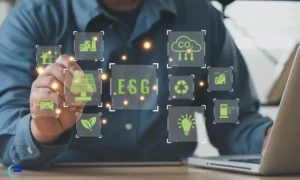
7 ESG and Sustainability Career Pathways You Need to Know in 2025
The employment landscape in the Middle East is undergoing a structural shift. ESG and sustainability roles are becoming embedded across core departments…

In 2025, carbon disclosure has evolved from a reputational initiative to a regulatory, financial, and strategic imperative. The era of vague net-zero claims and selective emissions reporting is closing fast. In its place is a new era of honest, comprehensive, and audit-grade carbon footprint disclosures—driven by regulatory convergence, investor scrutiny, and stakeholder demands for transparency.
Below, we will explore the new disclosure paradigm, focusing on the structural challenges of GHG accounting, the operational risks of underreporting, and the frameworks that are setting new expectations. It offers detailed guidance on how businesses can build credible, multi-scope carbon inventories, align with evolving global standards, and avoid the reputational and compliance risks associated with greenwashing.
Historically, carbon reporting was largely voluntary—conducted through sustainability reports or corporate websites with limited verification. Today, regulatory bodies have formalized expectations:
These developments reflect the consensus that carbon is now a financially material risk, subject to audit, assurance, and performance evaluation—just like any financial metric.
Beyond legal mandates, market dynamics are also driving stricter disclosure:
Together, these forces are making carbon disclosure an operational necessity—not just a sustainability gesture.
Transparent carbon accounting depends on accurate classification of emissions under the Greenhouse Gas (GHG) Protocol, which divides emissions into three scopes:
These include GHGs released from owned or controlled sources, such as:
These are typically the most visible and easiest to quantify, but often represent only a small share of total emissions for service-based companies.
These are indirect emissions from the generation of purchased electricity, steam, heating, or cooling consumed by the reporting company.
Scope 3 represents all other indirect emissions that occur in the value chain. It includes upstream and downstream categories such as:
Scope 3 often constitutes over 70-90% of a company’s total emissions, especially for manufacturing, retail, tech, and service industries. Yet, it remains the most inconsistently reported due to:
Offsetting emissions—rather than reducing them—has come under intense scrutiny. In 2025, most regulatory bodies and investors demand transparency on:
Carbon neutrality claims based solely on offset purchases are now widely considered misleading without robust Scope 1–3 disclosures and clear decarbonization pathways.
Many companies disclose Scope 1 and 2 emissions while either ignoring or underreporting Scope 3. This creates a skewed carbon profile and raises compliance flags. Inconsistent Scope 3 reporting may result in:
GHG calculations based on outdated or generalized emission factors, missing activity data, or assumptions not aligned with sector-specific guidelines can render disclosures non-compliant or non-comparable.
The GHG Protocol Technical Guidance must be followed, and methodologies must be disclosed and consistent across reporting periods.
Accurate carbon accounting begins with robust data governance. This includes:
Large organizations must move away from spreadsheets and adopt automated, enterprise-grade carbon accounting systems.
Scope 3 transparency hinges on collaboration:
Some companies are implementing supplier ESG scorecards and capacity-building programs to enhance upstream disclosure accuracy.
Reporting frameworks are now converging. Businesses must ensure carbon disclosures are aligned with:
Disclosure alignment enhances credibility, comparability, and investor access.
Third-party assurance is now required under CSRD and increasingly expected by investors. Companies should prepare for:
Engaging external verifiers early ensures reporting frameworks, emissions boundaries, and data sources meet assurance criteria.
Carbon footprint data must be translated into meaningful disclosures for diverse stakeholders. This means:
Key best practices include:
Consistency between sustainability reports, websites, investor communications, and regulatory filings is critical to avoid fragmentation.
At IFRSLAB, we support businesses in building honest, auditable, and high-integrity carbon disclosure systems.
Our services include:
In the ESG landscape of 2025, credibility is currency. Companies that disclose carbon footprints transparently—not just attractively—will earn trust, capital, and long-term resilience.
We help you build the frameworks to get there.

The employment landscape in the Middle East is undergoing a structural shift. ESG and sustainability roles are becoming embedded across core departments…

The employment landscape in the Middle East is undergoing a structural shift. ESG and sustainability roles are becoming embedded across core departments…

The ESG agenda is moving faster than most corporate strategies can catch up with. What was once a boardroom side topic has now become a core filter for…
UAE : (+971) 52 710 0320 PAK : (+92) 300 2205746 UK : (+44) 786 501 4445
Office 2102 Al Saqr Business Tower 1, Sheikh Zayed Road
S-25, Sea Breeze Plaza Shahrah-e-Faisal, Karachi
Office#1304, 13th Floor, Al Hafeez Heights, Gulberg III
104 Broughton Lane Salford M6 6FL
P.O. Box 71, P.C. 100, Muscat
Typically replies within a day